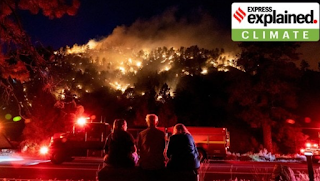Highway to ‘Climate Hell’: What Breaching the 1.5 Degree Celsius Warming Threshold Could Mean
This May marked the warmest May on record, continuing a trend of unprecedented global temperature increases over the past 12 months, according to Europe’s Copernicus Climate Change Service (C3S). The average global temperature for the past year was 1.63 degrees Celsius above the pre-industrial average, indicating a worrying trend towards breaching the critical 1.5 degree Celsius warming threshold.
Understanding the 1.5 Degree Celsius Threshold The 1.5 degree Celsius limit, established by the Paris Agreement in 2015, is more than just a number. It represents a line of defense against the most devastating impacts of climate change. This threshold aims to prevent catastrophic environmental changes, ensuring that warming remains "well below" 2 degrees Celsius above pre-industrial levels.
Why is 1.5 Degrees Important? Exceeding this limit would significantly increase the risks of severe weather events, such as intense floods, droughts, and wildfires. A report by climate scientists highlighted that breaching this threshold would endanger vulnerable ecosystems and regions, making the world a more dangerous place to live.
The Current Climate Scenario Recent events underscore the urgency of addressing climate change. North and Central India experienced a severe heatwave in late May, with temperatures nearing 50 degrees Celsius, causing hundreds of deaths. Similarly, the US National Oceanic and Atmospheric Administration (NOAA) reported a global mass coral bleaching event, threatening marine life and the livelihoods of millions who depend on reefs.
Climate Tipping Points The danger doesn’t stop at extreme weather. Climate tipping points, critical thresholds where natural systems shift irreversibly, pose a significant threat. These include the melting of the Greenland ice sheet, changes in ocean temperatures, and the death of coral reefs. Crossing these tipping points would lead to more warming and further environmental degradation.
What Needs to Be Done? To avoid breaching the 1.5 degree Celsius threshold, immediate and drastic reductions in greenhouse gas emissions are essential. This requires ending the burning of fossil fuels like coal, oil, and gas, which are primary contributors to global warming. Despite the urgent need for action, global greenhouse gas levels continue to rise, reaching historic highs in 2023.
The Path Forward El Niño, a natural climate pattern, has contributed to recent temperature spikes. However, human activities remain the dominant force driving global warming. As UN Secretary-General António Guterres aptly stated, “We are playing Russian roulette with our planet… We need an exit ramp off the highway to climate hell, and the truth is we have control of the wheel.”
Conclusion The world is at a critical juncture. The path we choose now will determine the future of our planet. By committing to immediate and sustained efforts to reduce emissions and adopt sustainable practices, we can steer away from the brink of climate catastrophe and secure a livable future for generations to come.
Frequently Asked Questions (FAQs)
- What is the significance of the 1.5 degree Celsius threshold?
- It is a critical limit set to avoid catastrophic climate impacts, such as extreme weather events and irreversible damage to ecosystems.
- What are climate tipping points?
- Critical thresholds where a natural system can shift to a different state, causing irreversible damage, like the melting of the Greenland ice sheet or the death of coral reefs.
- What has been the impact of recent temperature increases?
- Recent temperature rises have led to severe heatwaves, mass coral bleaching events, and increased frequency of climate-related disasters.
- What is the role of the Paris Agreement in addressing climate change?
- The Paris Agreement aims to limit global warming to well below 2 degrees Celsius, with efforts to keep it within 1.5 degrees Celsius above pre-industrial levels.
- How can the world stay within the 1.5 degree Celsius threshold?
- By drastically reducing greenhouse gas emissions, particularly from burning fossil fuels, and transitioning to sustainable energy sources.
- #ClimateCrisis
- #ParisAgreement
- #SustainableFuture
- #ClimateAction
- #GlobalWarming

